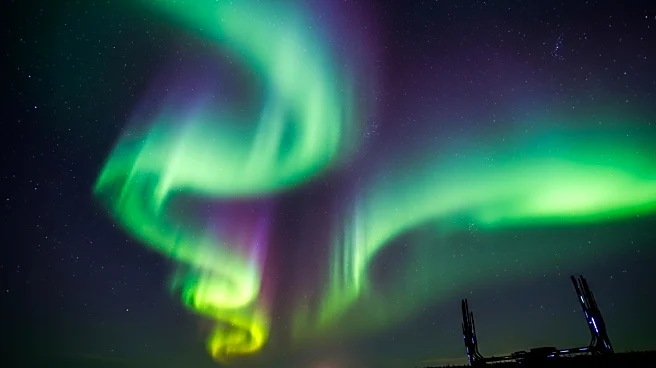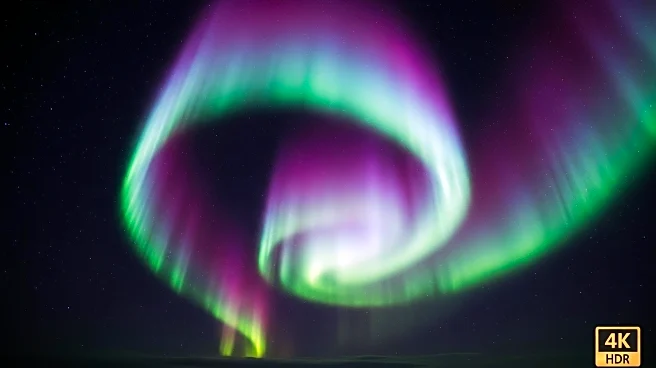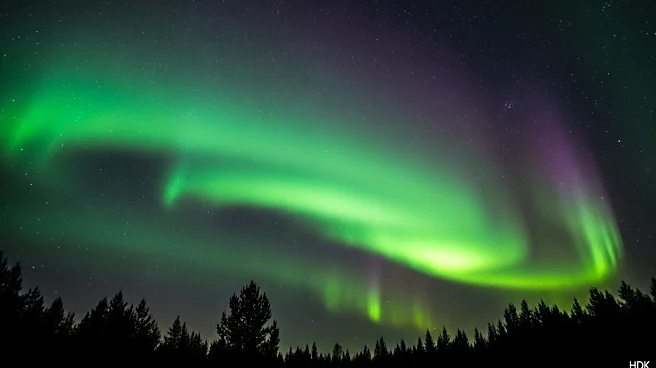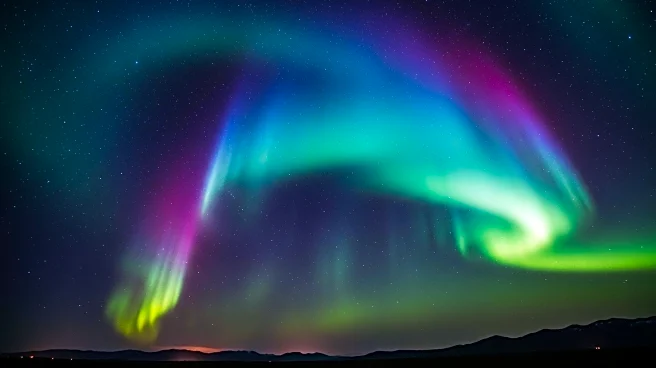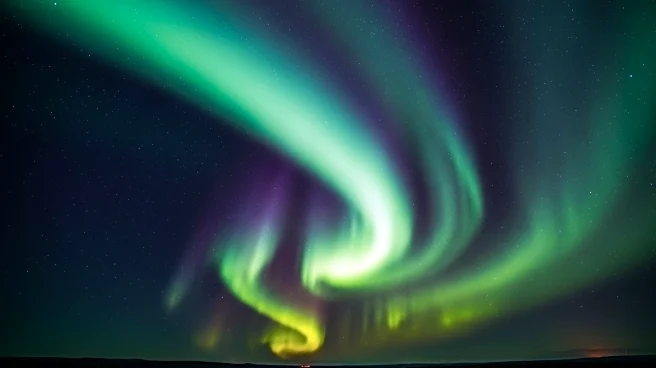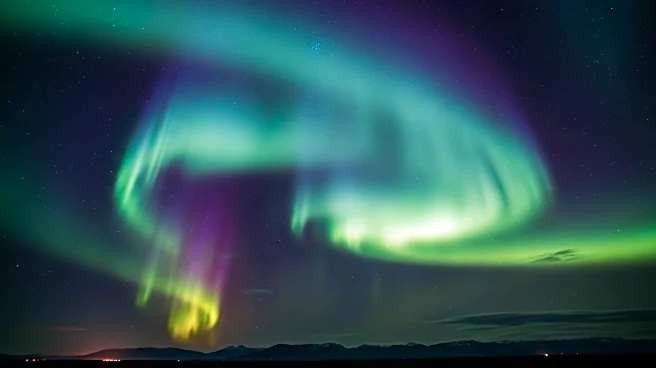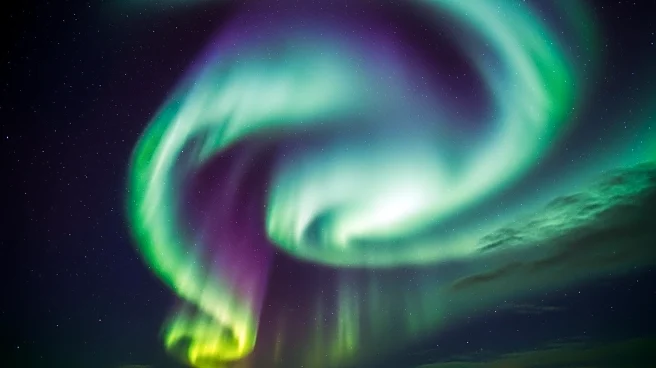What's Happening?
The Sun is entering a particularly active phase of its solar cycle, which is expected to enhance auroral displays over the next few years. This period, characterized by increased geomagnetic storms, will result in more vivid northern lights. The solar cycle, which spans approximately 11 years, is currently transitioning from its maximum phase, where sunspots and solar eruptions are most frequent, to a declining phase. Despite the decrease in solar flares, the presence of coronal holes on the Sun's surface will continue to emit high-speed solar winds, triggering geomagnetic storms and auroras.
Why It's Important?
The increased solar activity has dual implications. For aurora enthusiasts, this period promises spectacular displays of the northern lights, visible over extended periods and potentially reaching lower latitudes. However, the heightened geomagnetic activity poses risks to technological systems on Earth. Geomagnetic storms can disrupt communication networks, navigation systems, and satellite operations. These disruptions could affect GPS accuracy, radio communications, and even pose risks to astronauts and spacecraft. The phenomenon underscores the need for robust space weather monitoring and preparedness to mitigate potential impacts on technology.
What's Next?
As the solar cycle progresses, scientists anticipate continued geomagnetic activity, with potential for significant auroral displays. Monitoring and forecasting efforts will be crucial in preparing for and mitigating the impacts of geomagnetic storms on technological systems. Stakeholders in the aerospace and telecommunications industries may need to implement protective measures to safeguard infrastructure and operations. Additionally, public awareness campaigns could help inform communities about the potential for auroral sightings and the associated technological risks.
Beyond the Headlines
The increased solar activity highlights the interconnectedness of space weather and terrestrial technology. It raises questions about the resilience of modern infrastructure in the face of natural phenomena and the importance of international collaboration in space weather research and response strategies.

